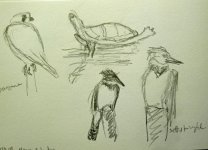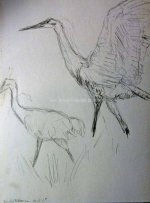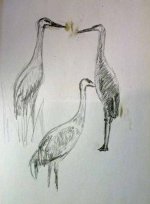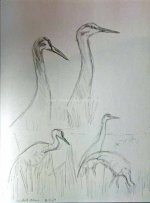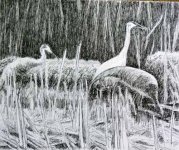solitaryVSong
Well-known member
Thanks all for you comments!
Since I've taken up sketching from life I've generally been the only birder anywhere near, outside of my wife who might also be sketching. But soon enough I'm sure I'll be doing it where everyone else is snapping photos like crazy. I don't believe I've ever seen anyone else sketching in the field. I'm sure that moment will seem very odd. But now I have no doubts at all. It's the right thing to do, at least for me.
I think it was David Sibley in 'Birding Basics' who recommended that all birders sketch and said how common it was on the other side of the pond. Debby Kaspari often recommends in on her blog here in the U.S. and I know people like Van Dusen do it all the time. But as I've said, I've yet to run into someone in the field who's actually sketching! Their loss.
Since I've taken up sketching from life I've generally been the only birder anywhere near, outside of my wife who might also be sketching. But soon enough I'm sure I'll be doing it where everyone else is snapping photos like crazy. I don't believe I've ever seen anyone else sketching in the field. I'm sure that moment will seem very odd. But now I have no doubts at all. It's the right thing to do, at least for me.
I think it was David Sibley in 'Birding Basics' who recommended that all birders sketch and said how common it was on the other side of the pond. Debby Kaspari often recommends in on her blog here in the U.S. and I know people like Van Dusen do it all the time. But as I've said, I've yet to run into someone in the field who's actually sketching! Their loss.




